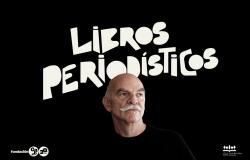The moment of the day in which it is eaten influences the glycemic control, something especially transcendental in people with prediabetes or diabetes type 2 in early stages. “We know that glucose tolerance is better in the morning and that a late or carbohydrate dinner can …
The moment of the day in which it is eaten influences glycemic control, something especially transcendental in people with prediabetes or type 2 diabetes In early stages. “We know that glucose tolerance is better in the morning and that a late or carbohydrate -rich dinner can impact night blood glucose and raise fasting glucose of the next day; all this has direct implications in the progression of type 2 diabetes and cardiovascular risk”states at Dra. Diana Díazz Rizzoowhich has recently participated in a scientific session on novelties in nutritional therapy held at the XXXVI National Congress of the Foundation of the Spanish Society of Diabetes (FSED).
The obesity and diabetes expert, who is a professor at the Oberta de Catalunya (UOC) and researcher at Columbia University (New York), has exhibited in this forum Research data of his working group that show how The calorie distribution in the day is related to glucose tolerancejust as the impact of the last meal of the day (Fixed and caloric distribution controlled) in postprandial glucose, night glucose and fasting glucose of the next day, also highlighting how Chronotypes and insulin sensitivity modulate these answers.
Chrononutrition, much more than a `time ‘issue
He chronotype It is the way in which circadian rhythms are synchronized, and basically reflects the natural predisposition that each person has to be more active and alert at certain times of the day and less in others, according to their circadian rhythm. The crononutrición Study how the moment of the day you eat interacts with our circadian rhythms, affecting metabolism and Health. Assuming its principles not only implies what or how much we eat, but when we do it. “In a world where we eat increasingsays Díaz Rizzolo, who admits that “Chrononutrition is a simple and powerful tool to improve glycemic control And, without a doubt, applying it in consultation can Mark a difference in the prevention and treatment of type 2 diabetes“.
Regarding glucose controlthe application of Chrononutrition provides a little dimension little considered: the time matters… and, in fact, “Eating time must be considered as a clinical variable”in the opinion of Dr. Díaz Rizzolo. Although health professionals already talk about intermittent fasting (which does not always have positive implications) or the importance of light dinners, “There is still the concept of circadian rhythms in clinical guides”says this expert, for whom “It is necessary to adapt the recommendations according to the chronotype, the work schedules and the metabolic conditions of each patient“.
Practical tips
An aspect of special importance that the UOC specialist affects is that “Eating late affects more than we think, especially our night glucose and morning”as well as emphasizes that “The body does not respond equal to food during the day: the” when “does matter”.
Starting from this reality, Dr. Díaz Rizzolo brings five Essential tips on chrononutrition for better glycemic control:
- Prioritize calories and carbohydrate charges in the early hours of the day
- Avoid copious and very late dinners, especially in people with glycemic alterations.
- Maintain regular food schedules, aligned with natural light
- Study the chronotype itself: Not everyone metabolized the same time
- And, above all, not obsessing: small sustained changes can have a great impact
Cardiosaludable food: Atlantic diet
But the News in nutritional therapy In the context of diabetes they go further, and even go through Recover and optimize classical practices and proven efficacy. And, despite the fact that in recent years new dietary models have emerged with a cardiosaludable orientation, “It is essential not to lose sight of the value of our food traditions”points the Dr. María del Mar Calvo Malvar, from the University Clinical Hospital of Santiago de Compostelafor whom “The recovery of patterns such as Atlantic or Mediterranean diets, well adapted to our cultural and geographical environment, can be an especially effective strategy,”.
These are proven models, based on fresh, local and minimally processed foods, which have demonstrated benefits on cardiovascular health and that, in addition, are easier to implement and sustain over time compared to other less entrenched patterns. Specifically, the Mediterranean diet It constitutes a traditional pattern with a solid scientific base in the Cardiovascular Disease Preventionwhich also incorporates many of the principles of food sustainability. In this same line, the Atlantic diet represents another traditional model healthy and respectful of the environmentrooted in the peninsular northwest, but easily applicable to the European Atlantic arch.
The Atlantic diet It is a traditional dietary model characterized by its wealth in fresh products, seasonal and local origin, such as fruits and vegetables (especially the brassic family), fish and seafood, whole grains, legumes, dairy products and olive oil. This combination makes it a healthy diet, rich in nutrients and low in saturated fats. Among the most outstanding benefits of this diet, the expert of the University Hospital of Santiago de Compostela, underlines “The reduction of the risk of metabolic syndrome and other chronic diseases, the improvement of the lipid profile and the favor of healthy body weight”. In addition, he adds, being based on fresh, local and minimally processed products, “It is a minor ecological footprint compared to more industrialized diets, which aligns it with the sustainability principles.”.
As for its extension outside the Atlantic aspect, “It could be feasible to adapt the Atlantic diet to other contexts, since its principles are based on fresh and accessible foods in many parts of the world.”indicates Dr. Calvo. Although some of its characteristics, such as seafood or certain fish, may need adjustments in areas where they are not so common, fundamental ingredients (such as vegetables, whole grains and olive oil) are easily accessible in other regions. In fact, he says, “The flexibility of the Atlantic diet makes it a universally applicable modelwhich can adapt to different cultural and food realities without losing its health and environmental benefits “.
Little healthy diets that threaten the sustainability of the planet
Among the new dietary models that state in recent years, the Planetary Health Dieta global initiative that seeks Compatible human health with the ecological limits of the planet. It promotes a food based mostly on products of plant origin, with a more moderate consumption of food of animal origin and a clear approach to sustainability. “Both Atlantic diet such as Mediterranean can be considered local adaptations of the principles promoted by the `Planetary Health Diet’which facilitates its acceptance and implementation in specific cultural contexts “according to Dr. María del Mar Calvo.
And is that The evolution of the diet in recent decades has had negative consequences for both human health and for the planetwhich invites you to adopt an integrated approach, from health care and community scope, to reverse this trend. In the opinion of Dr. María del Mar Calvo, “Promoting healthy and sustainable eating is key to face current public, environmental and cultural challenges.”






